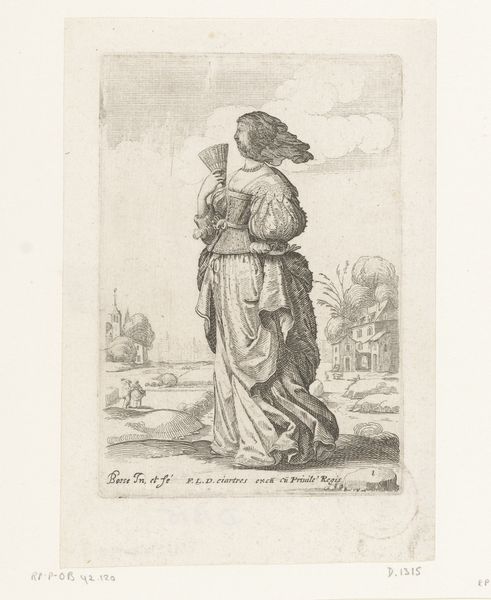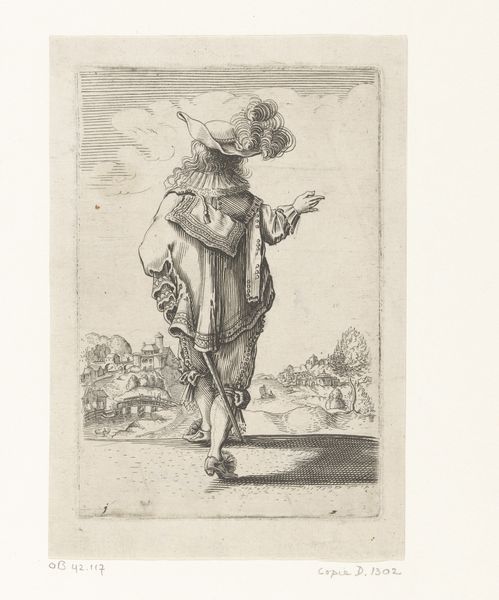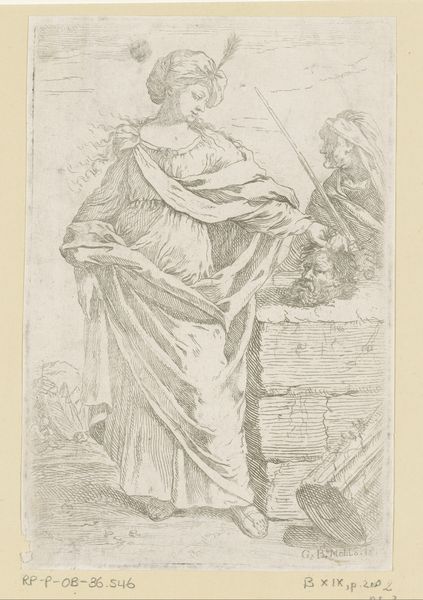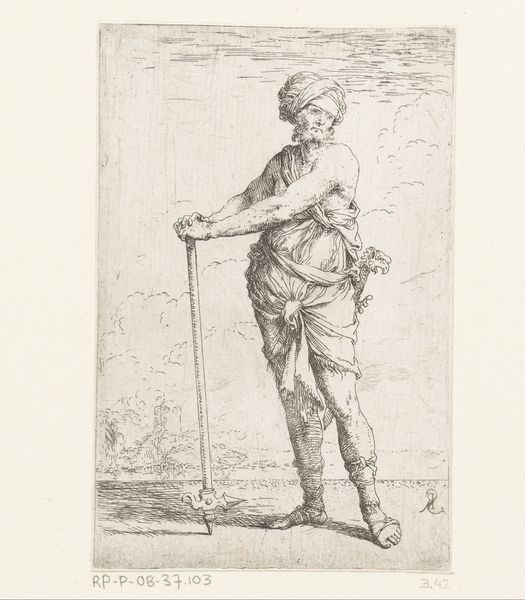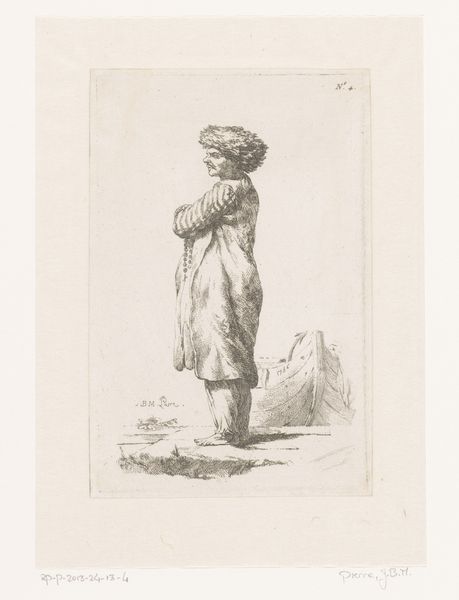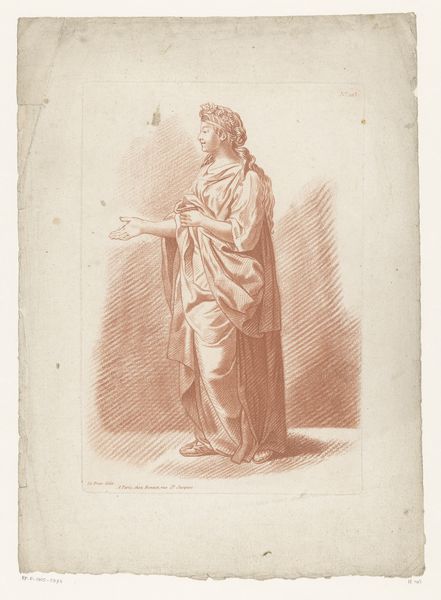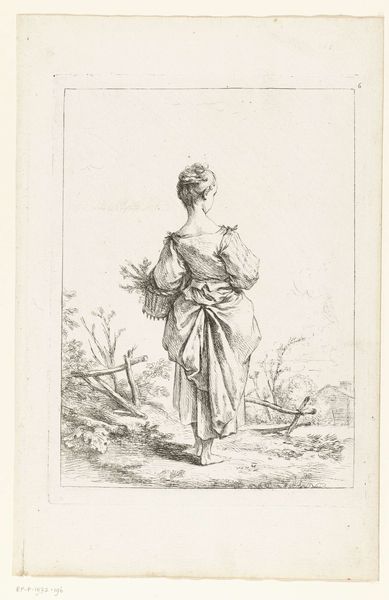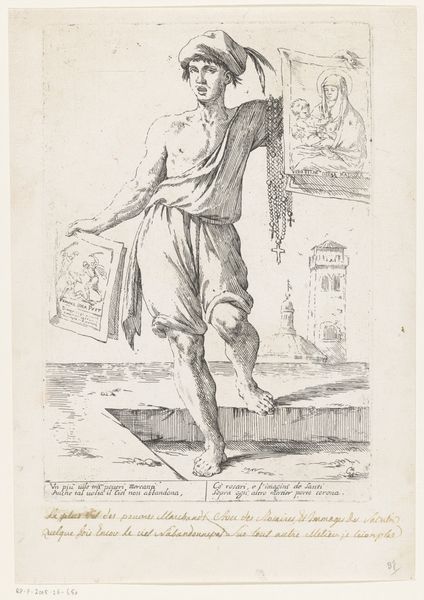
etching
#
baroque
#
etching
#
figuration
Dimensions: height 141 mm, width 93 mm
Copyright: Rijks Museum: Open Domain
Curator: This etching is titled "Lopende vrouw," or "Walking Woman," created by Salvator Rosa around 1656-1657. Editor: She seems so vulnerable. Her face is turned away, almost hidden, and her clothing drapes around her, offering a kind of inadequate protection. Curator: Rosa was quite a character, active in the turbulent art world of 17th-century Italy. He was known for his rebellious spirit and his interest in less idealized subjects. It is currently housed in the Rijksmuseum. Editor: Absolutely. It’s fascinating how Rosa uses such delicate lines to convey this sense of melancholy. This woman’s posture and the implied weight of her situation feels remarkably immediate, even now. Who do you imagine she is? Curator: Rosa's images of everyday people must be considered within a society steeped in religious and mythological representation. Did he create this image in reference to those of religious and mythological art? He produced many etchings in series, often of banditti, soldiers, or peasants. These characters reflected, perhaps, the upheavals of his time. Editor: Yes, that disruption is evident in his work. And within this piece, I wonder how the patriarchy’s visual regimes restricted the possibilities for women, especially the poor and uncelebrated, and thus may have determined Rosa's aesthetic choices? Curator: The baroque period loved dramatic effects. We see an excellent employment of light and shadow in this etching, contributing to that effect, despite it being in black and white. What also catches my eye is that rather than glorify war or the Church, Rosa's paintings capture the realities of ordinary people. Editor: Which brings this anonymous woman to our current moment. Consider those women facing displacement or precarity today—it lends the work renewed potency, a sharp commentary on timeless inequities. Curator: Rosa's works present individuals that were otherwise invisible, within an acceptable allegorical fashion of the time. It offers a critical view, which may be its continuing impact. Editor: Indeed, and for me, the true strength lies in that echo across time, connecting past injustices with those still present. Thank you.
Comments
No comments
Be the first to comment and join the conversation on the ultimate creative platform.
